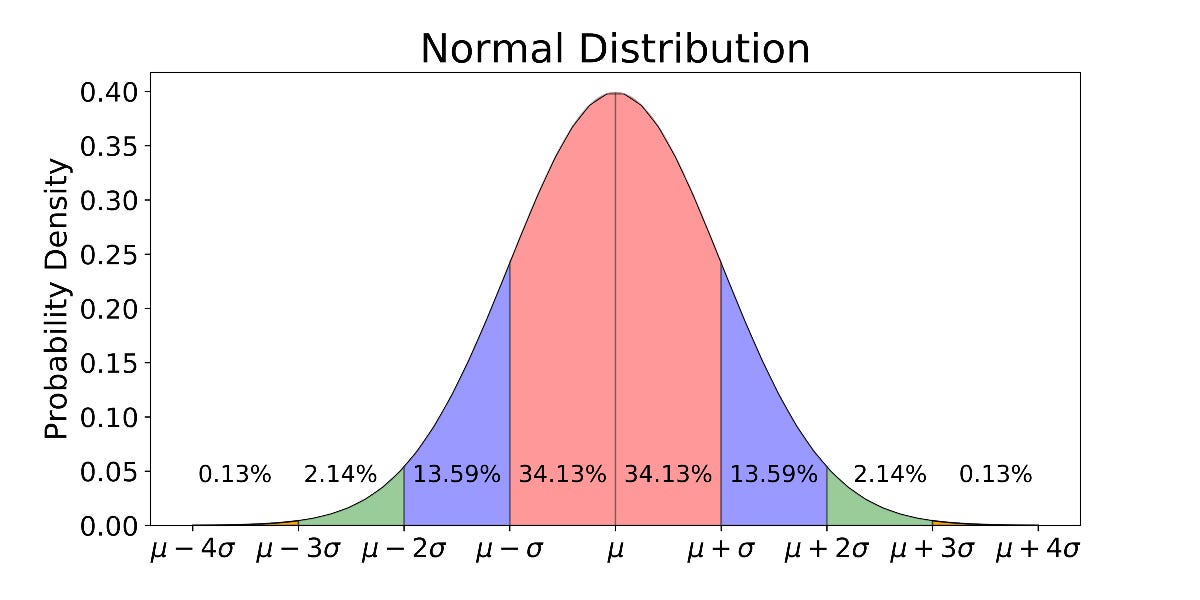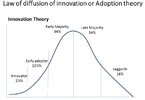To the extent that the efficient market hypothesis is true, a stock split would have no impact on a stock price. As far as I’m aware, most rigorous studies have found no consistent effect from stock splits.
However, there are some reasons to expect TSLA may be an exception.
- TSLA is an outlier on the stock market in that it has an unprecedentedly colossal amount of options trading. As reported by the Financial Times in this article last November:
In case you missed it: TSLA in the COVID/Robinhood/WallStreetBets/Meme Stock era has as much options trading as the entire rest of the S&P 500! The stock split is about to reduce the minimum price of calls and puts by a factor of 3. There’s a big difference in the number of investors interested in a $3000 contract than a $1000 contract, especially considering Tesla’s unusually high retail investment interest and even more exceptional interest from young investors (like teens and twenty-something’s) who barely have any money but collectively have a lot of money and risk appetite.
- There are probably enough believers in technical analysis and in the social psychology surrounding stock splits that the expectations of a stock split driving a bullish run could become a self-fulfilling prophecy, especially for a company like Tesla which has an unprecedentedly large and connected community surrounding the company and investing in it.
- A non-negligible portion of the investor population does not understand the difference between a share price and market capitalization, especially amongst the aforementioned young novice investors. According to @farzyness, who says he taught casual lunchtime personal finance and investing classes while he was at Tesla, said he was surprised how many employees interested in maxing out their stock options didn’t know about these kind of investing fundamentals, and Tesla employees are now one of the biggest investor demographic groups for TSLA stock.
- Human emotions at a primal level do not react the same way to a $900 share price vs a $300 price, even if the person consciously knows they should be looking at the price in the context of total shares outstanding and total earnings expectations. Few companies grow enough after IPO to get to the point that they have a share price around $1000, so Tesla is in rarified air here. I’m not sure that enough companies have gotten to this point to even have enough of a sample size for doing a historical study. Currently almost all of the top 100 large cap stocks have share prices below $400, with the majority between roughly $80-350 (link).
- To the extent that transactions are actually lumpy batches in the underlying mechanics of trading on the stock exchange, increased trading liquidity from increased share count may increase volatility in general. TSLA already is unusually volatile for a large cap stock and has a lot of trading volume.
- To the extent that Tesla’s unprecedentedly large options market is causing an unprecedentedly large amount of naked short selling by market makers, a split might force them to scramble to buy real shares, thus initiating a short squeeze and potentially a second-order effect of squeezing from delta and gamma hedging. If I remember correctly, @Artful Dodger wrote extensively about this hypothesis around the time of the last split. I’m not personally sure if this is a real effect but it’s at least plausible in my opinion.
- TSLA is the most-watched stock on the market (and if I had to guess without hard data, most-watched in the 4 century history of joint-stock corporations) and the split generates increased attention which could increase volatility. Furthermore, if the audience for those articles/videos/radio discussions ends up being biased towards attracting new investment on the bull side, the share price would tend to rise. Most of the media attention seems to be neutral or positive on the stock split for TSLA, so it’s plausible that it would cause increased buying pressure.
Updates:
1) I actually took some time to read proper scientific studies of stock splits for publicly traded companies based in the US and it turns out there probably is, on average, some outperformance effect on the order of 2-10% in the days and months after the split announcement and execution and the hypotheses most supported by the empirical data are that splits often happen because
- A company's management wants the stock price to be in a more conventional $50-$300 range and expects good performance in the upcoming quarters, so they get ahead of the issue by declaring a share split
- Investors take the tendency from the former hypothesis as a signal of management confidence and analysts actually exhibit a tendency to slightly increase consensus earnings expectations because of a stock split even in the absence of other notable information being released publicly
In general, there does not appear to be much empirical support for the ideas that stock split rises are in general driven by increased liquidity or psychological effects of smaller numbers.
However, with respect to liquidity, I maintain the argument from the original post that TSLA is probably an exception because of its wacky options market that has no other comparison that comes even remotely close, except for Amazon. I mean, for example a single Jan '24 $1100 call contract costs a bit more than $20K right now. That is 23x the minimum buy-in price to purchase a share. This is crazy and many investors, especially the young ones doing a lot of options trading, don't even have that much capital in their entire portfolio. Dropping that to $6.7K next week will majorly expand the interest. Similar crazy prices exist across vast portions of the options chain.
2) My original list was missing an important data point: Tesla's last stock split in 2020. It's only a sample size of one, but TSLA and Tesla are unique and unprecedented in so many ways that I think at least some idiosyncratic analysis is warranted.
I have never seen rigorous science showing that technical analysis actually has reliable
predictive value but it can definitely be useful for
retrospective analysis when clear statistical patterns have shown up. In this case, there was clearly a stable average around $290/share in July and early August as the market apparently reacted favorably to the Q2 results while being boosted by strong macro performance. Then, on the very next trading day after the stock split announcement, trading volume more than doubled from what it had been for the prior two weeks and the stock price rocketed upward for the 14 trading days leading up to the actual split. After the split excitement settled down, TSLA was sitting at around $420, 45% higher than before the announcement, and TSLA stayed in that range until the day after the S&P 500 inclusion announcement.
Hold up, though. The macros supported this apparent stock split run and also probably contributed to the crash and volatility following the split effective date. Here's a comparison of SPY and TSLA zoomed in from June 28th to October 31st, and below that, the chart for SPY by itself so the variance is easier to see.
However, note that the vertical axis does not start at zero. We are dramatically zoomed in on SPY's variance. In that August, SPY only increased 4% between the 11th and the 31st, 11x less than TSLA's increase.
In conclusion, after today's learning and writing this out, I have changed my mind and now I expect the stock split will have some positive effect, perhaps 10%, even though there's no good reason for this to happen. Meanwhile, me and my giant batch of January and March calls are patiently waiting for the one-two face punches that Q3 and especially Q4 will deliver to show the market where the fundamentals are headed.





